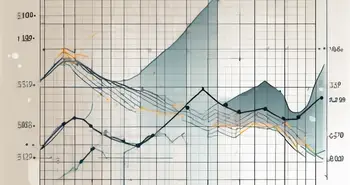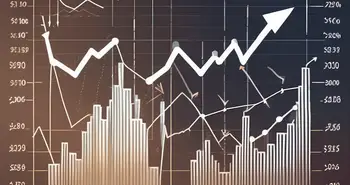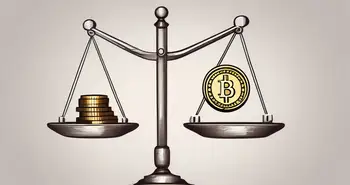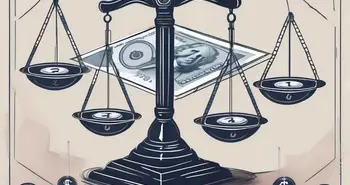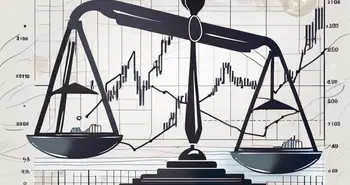Unraveling the Concept of Triangular Arbitrage in Trading

As an expert in the field of trading, I am here to unravel the concept of triangular arbitrage and provide you with a comprehensive understanding of this trading strategy. Whether you're an experienced trader looking to expand your knowledge or a beginner looking to explore new opportunities, this article will guide you through the basics, mechanics, risks, rewards, and future prospects of triangular arbitrage.
Understanding the Basics of Arbitrage
Before delving into the realm of triangular arbitrage, let's first define what arbitrage actually is in the context of trading. Arbitrage refers to the practice of capitalizing on price discrepancies among different markets or assets. The ultimate goal is to buy low in one market and sell high in another, thereby profiting from the imbalance.
Arbitrage is a strategy that has been employed by traders for centuries. It is based on the principle that markets are not always efficient and that there are opportunities to exploit price differentials. Traders who engage in arbitrage are constantly on the lookout for these discrepancies and are quick to act when they spot them.
One of the key factors that contribute to price discrepancies is supply and demand. When there is a high demand for a particular asset in one market, its price is likely to be higher compared to another market where the demand is lower. Traders take advantage of this by buying the asset in the market with lower demand and selling it in the market with higher demand, thereby making a profit.
Defining Arbitrage in Trading
In trading, arbitrage occurs when an investor exploits price differentials for the same asset in different markets. This price discrepancy can arise due to variations in supply and demand, transaction costs, or market inefficiencies. Traders employ various strategies to execute arbitrage, and one such strategy is triangular arbitrage.
Triangular arbitrage is a more complex form of arbitrage that involves taking advantage of price discrepancies between three different currencies. Traders use a series of currency conversions to exploit these discrepancies and make a profit. This strategy requires careful analysis and quick execution, as the opportunities for triangular arbitrage are often short-lived.
Another factor that can contribute to price discrepancies in trading is transaction costs. Different markets may have different fees and charges associated with buying and selling assets. Traders take these costs into consideration when executing arbitrage strategies, as they can significantly impact the overall profitability of the trade.
The Role of Arbitrage in Financial Markets
Arbitrage plays a crucial role in ensuring efficient markets. As traders exploit price discrepancies, they bring market prices closer to their equilibrium values and eliminate any potential profit opportunities. In a perfectly efficient market, arbitrage opportunities are limited, as prices adjust quickly to eliminate any imbalances.
However, in reality, markets are not always perfectly efficient. There are various factors that can contribute to market inefficiencies, such as information asymmetry, regulatory restrictions, or technological limitations. Traders who engage in arbitrage help to correct these inefficiencies by taking advantage of the price discrepancies and bringing the market closer to its equilibrium state.
Arbitrage also provides liquidity to financial markets. When traders buy and sell assets to exploit price discrepancies, they increase the trading volume and improve market liquidity. This benefits other market participants, as it makes it easier for them to buy or sell assets at fair prices without significantly impacting the market.
In conclusion, arbitrage is a trading strategy that involves capitalizing on price discrepancies among different markets or assets. Traders employ various strategies, such as triangular arbitrage, to exploit these discrepancies and make a profit. Arbitrage plays a crucial role in ensuring efficient markets and providing liquidity to financial markets.
The Mechanics of Triangular Arbitrage
Now that we have a solid understanding of arbitrage, let's explore the mechanics of triangular arbitrage, a strategy that involves three currencies. Triangular arbitrage enables traders to exploit inefficiencies in exchange rates between three different currencies to generate profits.
The Three-Currency Transaction
A typical triangular arbitrage transaction involves three currency pairs. Let's consider the following example:
EUR/USD = 1.20
USD/JPY = 110.00
EUR/JPY = ?
In this scenario, we can calculate the implied EUR/JPY exchange rate by multiplying the exchange rates of EUR/USD and USD/JPY:
EUR/JPY = (EUR/USD) × (USD/JPY) = 1.20 × 110.00 = 132.00
If the calculated exchange rate deviates from the actual market rate, a triangular arbitrage opportunity arises. Traders can then execute a series of rapid transactions to exploit the price discrepancy and make a profit.
Calculating Profit in Triangular Arbitrage
To calculate the potential profit in triangular arbitrage, one must consider transaction costs, order execution speed, and market volatility. Traders must also factor in potential risks, such as slippage and liquidity issues.
It is essential to note that technology plays a significant role in facilitating timely execution, as triangular arbitrage opportunities can be short-lived. High-frequency trading algorithms are often employed to identify and capitalize on these opportunities within milliseconds.
Risks and Rewards of Triangular Arbitrage
As with any investment strategy, triangular arbitrage comes with its own set of risks and rewards. Let's explore both sides of the coin.
Potential Profits from Triangular Arbitrage
Triangular arbitrage can offer lucrative profit opportunities for traders who can effectively identify and exploit these inefficiencies. By capitalizing on rapid price disparities, traders can generate consistent profits within a short span of time. However, it takes expertise, experience, and a deep understanding of the market to consistently extract profits from triangular arbitrage.
Understanding the Risks Involved
While the potential for profits is enticing, traders must be aware of the risks associated with triangular arbitrage. Rapid execution is crucial in this strategy, and any delays could result in missed opportunities or even losses. Moreover, market volatility can increase the likelihood of slippage, where the executed prices differ from the expected prices.
It's also important to note that triangular arbitrage opportunities are relatively scarce in highly efficient markets. Therefore, traders must be vigilant and continuously monitor market conditions to identify any favorable situations.
The Impact of Market Efficiency on Triangular Arbitrage
The efficiency of financial markets plays a critical role in the success of triangular arbitrage. When markets are highly efficient, price discrepancies are quickly corrected, leaving minimal room for arbitrage opportunities.
How Market Efficiency Affects Arbitrage Opportunities
In perfectly efficient markets, where information is readily available and prices reflect all available information accurately, triangular arbitrage opportunities are scarce. Traders must rely on technology and sophisticated algorithms to identify fleeting market inefficiencies that can be exploited for profit.
The Role of High-Frequency Trading in Triangular Arbitrage
High-frequency trading (HFT) has revolutionized the way triangular arbitrage is executed. HFT algorithms leverage advanced technology and complex mathematical models to identify, analyze, and execute trades within microseconds. This enables traders to capitalize on even the slightest price discrepancies, amplifying their potential profits.
The Future of Triangular Arbitrage
Triangular arbitrage is not immune to the advancements in technology and the evolving regulatory landscape. As the financial industry continues to embrace technological innovations, we can expect even greater efficiency in markets, potentially reducing the prevalence of triangular arbitrage opportunities.
Technological Advancements and Triangular Arbitrage
The ongoing advancements in technology, such as artificial intelligence and machine learning, are reshaping the landscape of trading. These technologies enable traders to analyze vast amounts of data and identify patterns that might not be apparent to human traders. As a result, the future of triangular arbitrage may rely heavily on sophisticated algorithms and AI-driven trading systems.
Regulatory Considerations in Triangular Arbitrage
Regulators are constantly adapting to changes in the financial industry. To ensure market integrity and protect investors, regulatory bodies may implement stricter rules and surveillance mechanisms. Traders must stay updated with regulatory changes and comply with any new requirements to continue engaging in triangular arbitrage.
As an expert in trading, I emphasize the importance of comprehensive research, continuous learning, and strategic risk management when venturing into complex trading strategies such as triangular arbitrage. It is crucial to build expertise gradually and practice in simulated trading environments before committing real capital. Learning from experienced traders, following market trends, and developing a solid foundation in fundamental and technical analysis will greatly enhance your chances of success.
Frequently Asked Questions (FAQ)
What is triangular arbitrage?
Triangular arbitrage is a trading strategy that involves exploiting price discrepancies among three different currencies to generate profits. It relies on the concept of arbitrage, where traders aim to buy low in one market and sell high in another to take advantage of imbalances.
How does triangular arbitrage work?
In triangular arbitrage, traders execute a series of rapid transactions involving three currency pairs to exploit price differences. By calculating the implied exchange rates between the currencies, traders identify potential opportunities. Once a discrepancy is detected, traders rapidly execute trades to profit from the imbalance before the market corrects itself.
What are the risks of triangular arbitrage?
Triangular arbitrage involves certain risks, including execution speed, slippage, liquidity issues, and market volatility. Traders must be able to react quickly to leverage profitable opportunities, as delayed execution could result in missed trades or potential losses. It is essential to have strong risk management strategies in place to mitigate these risks.
How can technology help in triangular arbitrage?
Technology, particularly high-frequency trading algorithms, plays a crucial role in executing triangular arbitrage efficiently. These algorithms leverage advanced computing power to scan markets, identify potential opportunities, and execute rapid trades within milliseconds. Technology enhances the speed and accuracy of triangular arbitrage, maximizing profit potential.
What does the future hold for triangular arbitrage?
The future of triangular arbitrage will likely be shaped by advancements in technology and changes in regulatory landscapes. As technology evolves, including artificial intelligence and machine learning, traders will leverage these tools to identify and execute profitable arbitrage opportunities. Regulatory considerations may play a role in shaping the future of triangular arbitrage as well, as oversight and compliance requirements continue to adapt and evolve.
I hope this article has shed light on the concept of triangular arbitrage and provided you with a deeper understanding of this complex trading strategy. Remember, knowledge and experience are key when delving into the world of trading. Best of luck on your trading journey!
Ready to put your newfound knowledge of triangular arbitrage into practice? Look no further than Morpher, the revolutionary trading platform that's transforming the world of investing with blockchain technology. With Morpher, you can trade across a multitude of asset classes, including forex, without worrying about fees or liquidity. Embrace the future of trading with fractional investing, short selling, and up to 10x leverage. Experience the unique trading opportunities of Virtual Futures on a platform that prioritizes your safety and control. Sign Up and Get Your Free Sign Up Bonus today to start trading on a platform that's as innovative as your strategies.

Disclaimer: All investments involve risk, and the past performance of a security, industry, sector, market, financial product, trading strategy, or individual’s trading does not guarantee future results or returns. Investors are fully responsible for any investment decisions they make. Such decisions should be based solely on an evaluation of their financial circumstances, investment objectives, risk tolerance, and liquidity needs. This post does not constitute investment advice.

Painless trading for everyone
Hundreds of markets all in one place - Apple, Bitcoin, Gold, Watches, NFTs, Sneakers and so much more.

Painless trading for everyone
Hundreds of markets all in one place - Apple, Bitcoin, Gold, Watches, NFTs, Sneakers and so much more.



